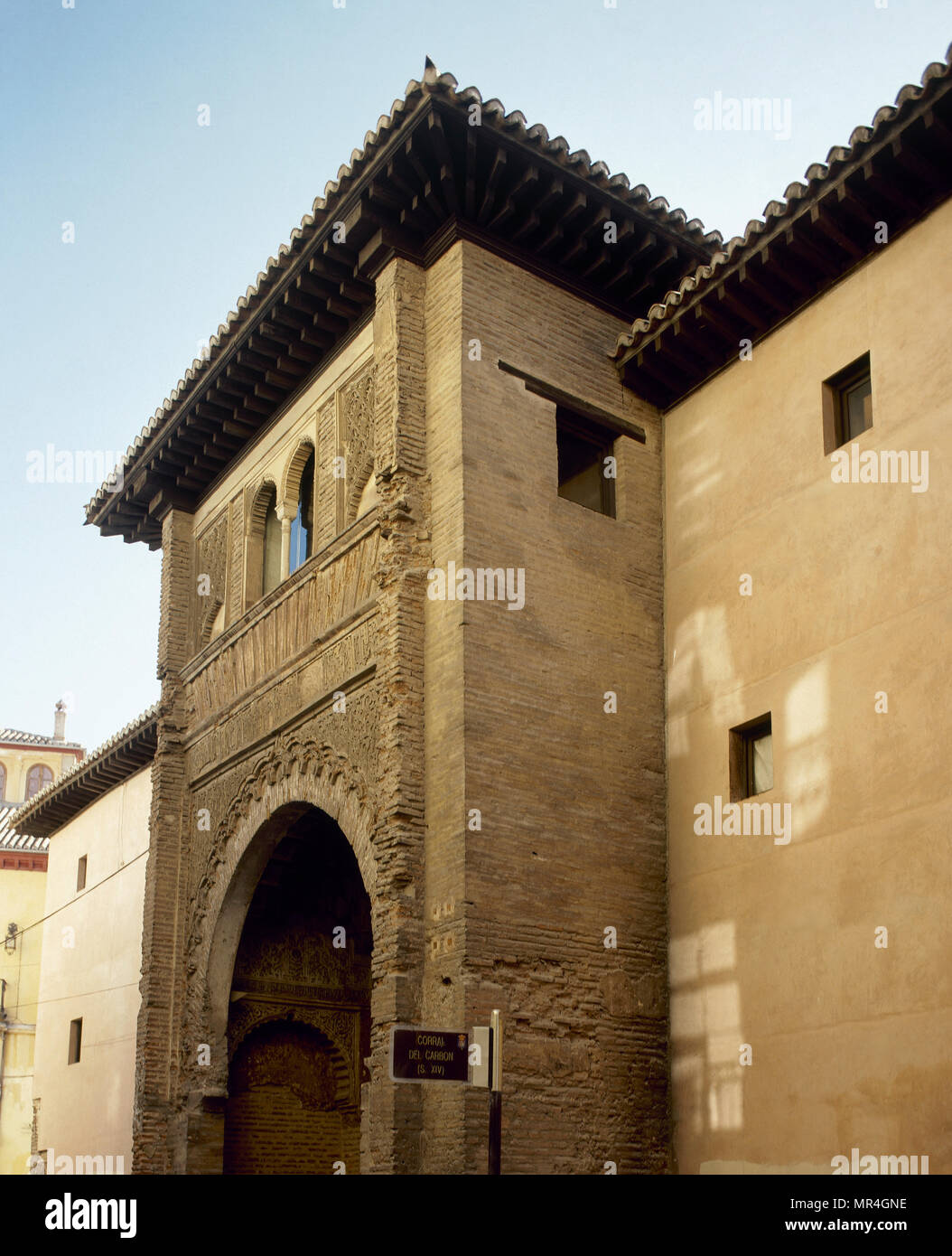Granada, Andalusia, Spain. The Corral del Carbon (Corral of Coal). View of the facade, built with a large horseshoe arch. Architectural detail. It is one of the most important buildings preserved from Granada's Nasrid period. It has had many uses throughout the history. The Corral del Carbon was built in the 16th century as a Khan, in the middle of the commercial area. After 1531 it was called as Corral del Carbon because of its use as storage for coal. In the 16th century was adapted for Casa de Comedias (House of Comedies). From 17th century onwards it was transformed into small apartments w

Image details
Contributor:
PRISMA ARCHIVO / Alamy Stock PhotoImage ID:
MR4GNEFile size:
49.2 MB (2.3 MB Compressed download)Releases:
Model - no | Property - noDo I need a release?Dimensions:
3735 x 4603 px | 31.6 x 39 cm | 12.5 x 15.3 inches | 300dpiDate taken:
31 May 2017Photographer:
Prisma ArchivoMore information:
This image could have imperfections as it’s either historical or reportage.
Granada, Andalusia, Spain. The Corral del Carbon (Corral of Coal). View of the facade, built with a large horseshoe arch. Architectural detail. It is one of the most important buildings preserved from Granada's Nasrid period. It has had many uses throughout the history. The Corral del Carbon was built in the 16th century as a Khan, in the middle of the commercial area. After 1531 it was called as Corral del Carbon because of its use as storage for coal. In the 16th century was adapted for Casa de Comedias (House of Comedies). From 17th century onwards it was transformed into small apartments with a central courtyard. At present is a cultural center.